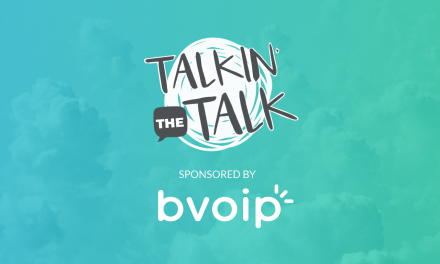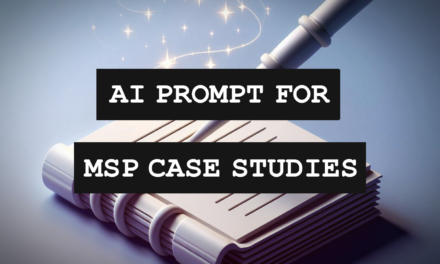Retargeting for MSPs: Pursue Your Prospects on Facebook, Google, and LinkedIn
It is common for a potential IT prospect to view your content and then leave your site without taking any action. This happens more often than not, as the percentage of first time opt-ins or conversions is typically rather small. For example, if you get 100 visitors to your blog and only 5 of them opt-in to receive your collateral, then that means there are 95 visitors that leave without taking further action or moving further through your funnel. While this seems like a lot of people, a 5% conversion is not a bad outcome.
The truth is, those 95 people that left your site might still interested enough to opt-in if given another chance. Giving up on them this early can be a costly mistake. This is where “retargeting” comes into play.
What is retargeting?
Retargeting is the act of showing ads to an audience based on a previous action they have taken. In the case of a brand strategy that we recommend for IT providers, the action would be reading your blog, listening to your podcast, or watching your video as your audience entered the awareness phase of your funnel. Since they didn’t engage and move further through the funnel the first time, retargeting gives you the opportunity to try again, reinforcing your opt-in message or showing new content that might appeal to them more than the initial attempt.
Whether you know it or not, you are being retargeted on almost every website and app that you use. Actions you have taken are constantly coming back to you in the form of targeted ads and recommended content. If you have ever looked at a product on Amazon and then seen it again later on Facebook, Instagram, and news sites then you know that this is true. Retargeting has become one of the most effective types of targeting methods and is now a major reason why branding strategies have become so effective.
How does retargeting work?
The way that retargeting works is actually quite simple. First, you choose which platforms or ad networks that you would like to retarget on, such as Google, Facebook, Instagram or Linkedin. Those platforms will allow you to build an audience from your web visitors by installing a snippet of code onto your website. As your audience grows, you are then able to create advertising campaigns to target all the visitors of your domain or just visitors of specific pages. These ads will then show on any page across the web that integrates with the platform you choose, essentially following your visitor around attempting to lure them back to your website.
The Ultimate Guide To Cash Flow For Managed Services
Sponsored by Alternative Payments & Zest
Retargeting Campaign Best Practices
Once you have decided which platforms you are going to use, you will notice that the process of creating campaigns is different on each platform. However, there are several fundamental best practices that are consistent across all of them that can be helpful to learn when developing campaigns.
Here are a few tips to help you navigate your options and optimize your retargeting campaigns for success:
Cookie Duration
When you build an audience from your web visitors, you will be given the option to decide how long to retain each visitor in your audience. While the standard is between 30-90 days, some platforms will allow you to retarget visitors up to a year. Be sure not to fatigue your audience and retarget them too many times (or for too long). This can oversaturate your message and lead your audience to form a negative perception of your brand.
Frequency Capping
One way to limit ad fatigue (especially if you are using a long cookie duration) is with frequency capping. This option allows you to limit the amount of impressions that are shown to each member of the audience, over a specific period of time. Try to limit ads to only a few impressions per week. This is just enough to remain relevant but won’t be perceived as an annoyance.
Ad Rotation
Another way to limit ad fatigue when retargeting is with ad rotation. It is important to run new ads every 15-30 days as the CTR of your ads will naturally decrease over time. Finding the right combination of cookie duration, frequency capping, and ad rotation will have a significant impact on the longevity of your campaign. The more ads that you can rotate into your campaign, the longer it will take for the performance to decline.
The Ultimate Guide To Cash Flow For Managed Services
Sponsored by Alternative Payments & Zest
Geotargeting
Not everyone that interacts with your content will be a qualified customer. One way to prevent showing ads to unqualified visitors is by limiting the ads to slightly beyond your service area. This will ensure that you do not waste advertising spend on visitors that may have found your content organically but do not live in a country or state that you do business.
Exclusions
You can also disqualify visitors from your retargeting audience by using exclusions. For example, if you are targeting visitors of your blog but do not want to include members of your contact list, you can do so. Each platform allows you to exclude audiences based on different criteria, so choose what works best for your objectives.
Tag Manager
If you are using multiple retargeting platforms, you will need to install several code snippets on your site. One way to easily manage these snippets is by using Tag Manager. This system (developed by Google) allows you to install just one code on your website and then gives you an interface to easily add and remove tracking tags in a low code environment.
List Integrations
When it comes to customer lists and matched audiences, no list is ever static. If you have an active funnel there will be contacts added and removed from your list every day. Integrating your list across the platforms will allow for your campaigns to run seamlessly without the need for constant uploading. For example, if you are running a Facebook campaign that includes your subscriber list on Mailchimp, you can easily set up this integration so that the data flows back and forth in real time.
Lookalike Audiences
One way to use retargeting to supplement the awareness stage of your funnel is through lookalike audiences. This feature allows you to build new audiences that have yet to interact with your brand, but fit the same demographics of your website visitors or viewers of your content. This can be a great way to use the analytic data that you acquire in the later stages of your funnel to help feed more audience members into the beginning stages.

SPONSORED BY ZEST

















